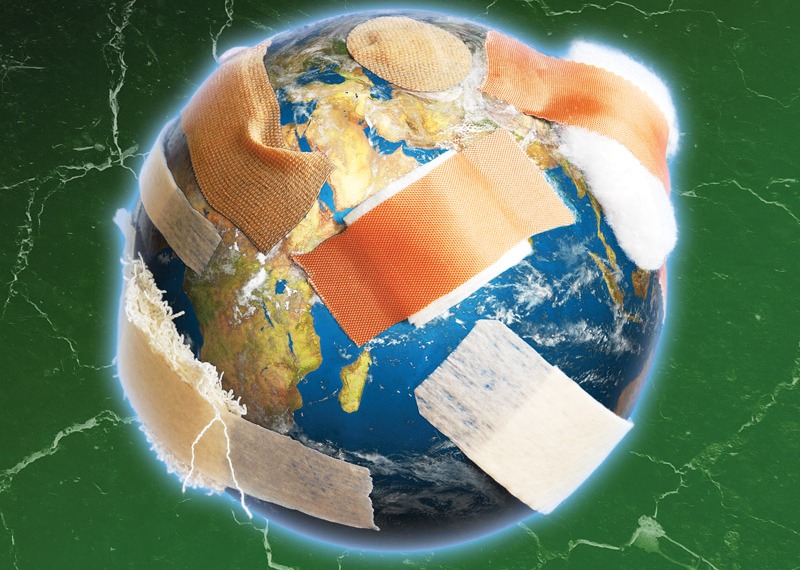
June 7, 2013, by Zoë Goodwin
An urgency to dematerialise the future
The United Nations Environment Programme has reported that by 2010 industrial civilisation was eating its way through 50 billion tonnes of minerals, ores, fossil fuels and biomass every year and if nothing changes, by 2050, this will almost triple to 140 billion tonnes every year.
Much attention today is being focused on using fewer resources and recycling precious materials to combat climate change, however, I find it quite bizarre that there is no mass public or political attention to the fact that we need to do this because if we don’t, these resources will simply run out.
A study published in 1972, The Limits to Growth (and updated in 1992 and 2002), warned that we would start to exceed the Earth’s carrying capacity if we do not change our ways. However, 40 years on and in absence of the necessary adjustments, humanity’s ecological footprint is at least 20% beyond what the Earth can sustain.
Christopher Barnatt, an associate professor of computing and future studies at the University of Nottingham business school, is an expert in explaining the future.
“It cannot now reasonably be denied that the Earth’s natural resources are currently being consumed at an increasing and totally unsustainable level.”
“Coping most successfully with resource depletion requires a need to develop radical dematerialisation strategies as a matter of some urgency.”
Dematerialisation means becoming less reliant on our physical resources. Christopher was able to explain to me some of the ways we are able to do this: “improved recycling, the end of our disposable culture, and a return to taking care of things and repairing them when they go wrong, and making investments in renewable and alternative energy sources, including wind farms and nuclear power.”
One particular example attracted my attention…the use of the 3D printer. They may soon be able to contribute to partially dematerialising manufacturing. They build objects by layer, adding in material only where it is actually needed. The result…products will be made from fewer raw materials. The potential of 3D printers is substantial, with a prediction that they could contribute to an 80% reduction in material usage in some industries, such as aerospace.
But not only can they lead to cuts in material usage but they can also reduce physical inventory as well as the resources consumed in transportation. Many items which are manufactured today are never actually sold and, in sales terms, one in seven dollars is being spent transporting products around the world. 3D printers can allow for us to digitally send products over the internet and then printed only when needed and as close to the customer as possible.
So to save our planet it is clear that substantial changes are needed. But who needs to be targeted the most?
Christopher wrote in one of his articles:
“Suggesting that we need to dematerialise and actually making it happen are, of course, two very different propositions. That said, many older people harbour practical experience of an age in which we consumed less and valued more. At the other end of the spectrum, today’s youth already spend a considerable proportion of their lives sharing digitally online. As our need to save resources becomes more acute, both the young and the old may have useful knowledge to impart to those in the middle age bracket who probably need to dematerialise the most.”
Story credited to Christopher Barnatt, University of Nottingham. Photo taken from: ‘Seven Ways to Fix the World’ (2012), Christopher Barnatt.
To find out more, take a visit to his website: www.ExplainingTheFuture.com
Previous Post
Picturing Politics: the 1997 Labour manifestoNo comments yet, fill out a comment to be the first

Leave a Reply